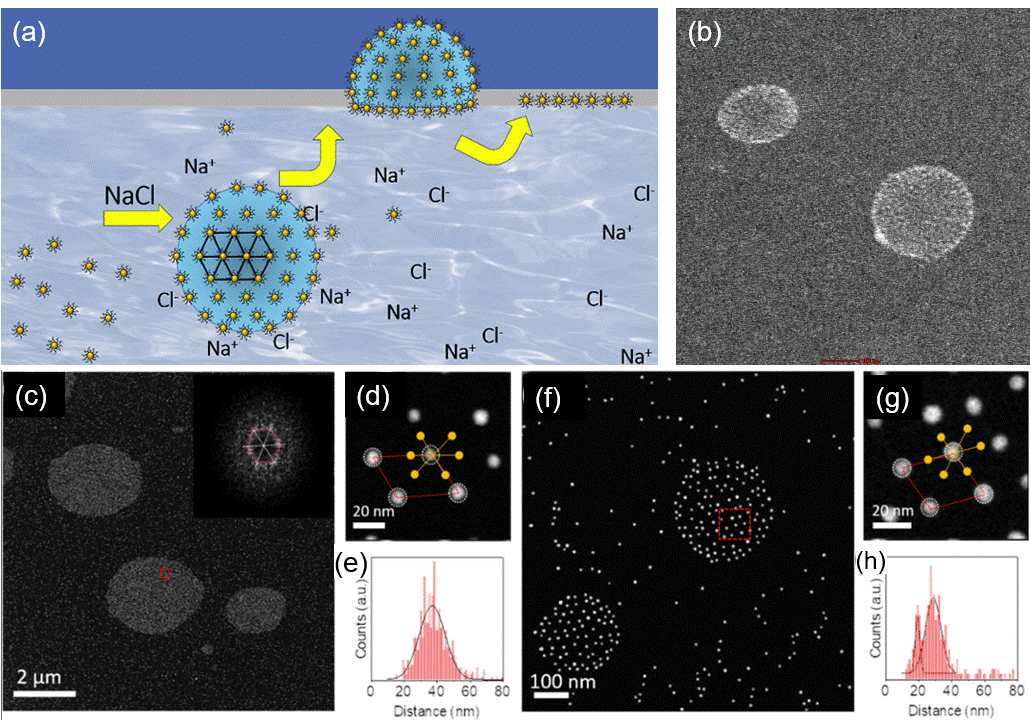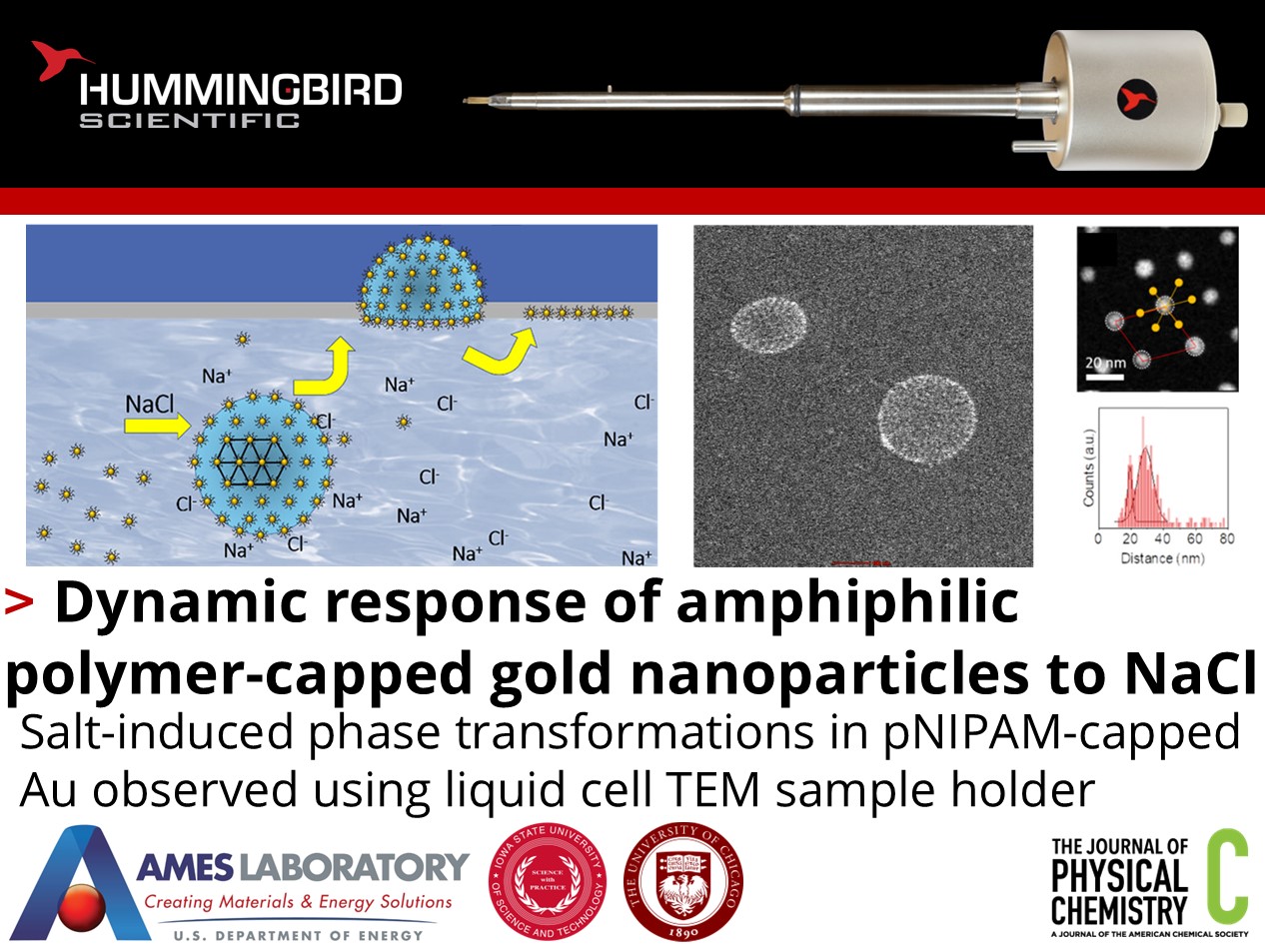How does NaCl addition trigger liquid-liquid phase separation near polymer-capped nanoparticles?
Alejandra Londoño-Calderon, Tanya Prozorov, and their colleagues at Ames laboratory, the Iowa State University, and the University of Chicago used their Hummingbird Scientific in-situ liquid flow TEM sample holder to investigate liquid-liquid phase separation and interfacial crystallization in poly(N-isopropylacrylamide)-capped gold (pNIPAM-capped Au) nanoparticles after introduction of NaCl at various concentrations under in-situ TEM.

a) Schematic illustrating the liquid-liquid phase separation and nanoparticle self-assembly around the salt-deficient phase. b) Liquid phase TEM video from pNIPAM globular assemblies after introducing 500 mM NaCl solution to the system. c) After 50 mM NaCl, large round-shaped aggregates exhibit hexagonal symmetry as shown in the inset FFT. d) Zoomed image of the area marked in red in (c) showing a single unit cell and the six closest neighbors. e) Histogram showing interparticle distance of 36.9 ± 8.0 nm. f) After 500 mM NaCl, smaller circular aggregates of nanoparticles with a short-range hexagonal symmetry are observed. g) Zoomed-in image of the unit cell of the red square in (f). h) Histogram of first-neighbor distance showing two peaks corresponding to nanoparticles at the edge and inside the round-shaped nanostructure. Copyright © 2021 American Chemical Society
Upon addition of NaCl, the density increase of the solution prompts a liquid-liquid phase separation that confines the polymer to the low-density and salt-deficient phase. The pNIPAM-capped Au nanoparticles then follow this interface and reside on the surface of polymer-filled globes with a hexagonal interparticle packing distance of ~23 nm. These decorated globes are buoyant and escape to the air-water interface, collapse, and form hexagonal crystalline domains with sizes that depend on the NaCl concentration. The study advances understanding of amphiphilic polymers and their role in bioinspired design and synthesis of functional nanostructures.
Reference: Alejandra Londoño-Calderon, Wenjie Wang, Jack J. Lawrence, Wei Bu, David Vaknin, Tanya Prozorov, The Journal of Physical Chemistry C (2021) DOI: 10.1021/acs.jpcc.0c11307
Full paper Copyright © 2021 American Chemical Society
View All News

